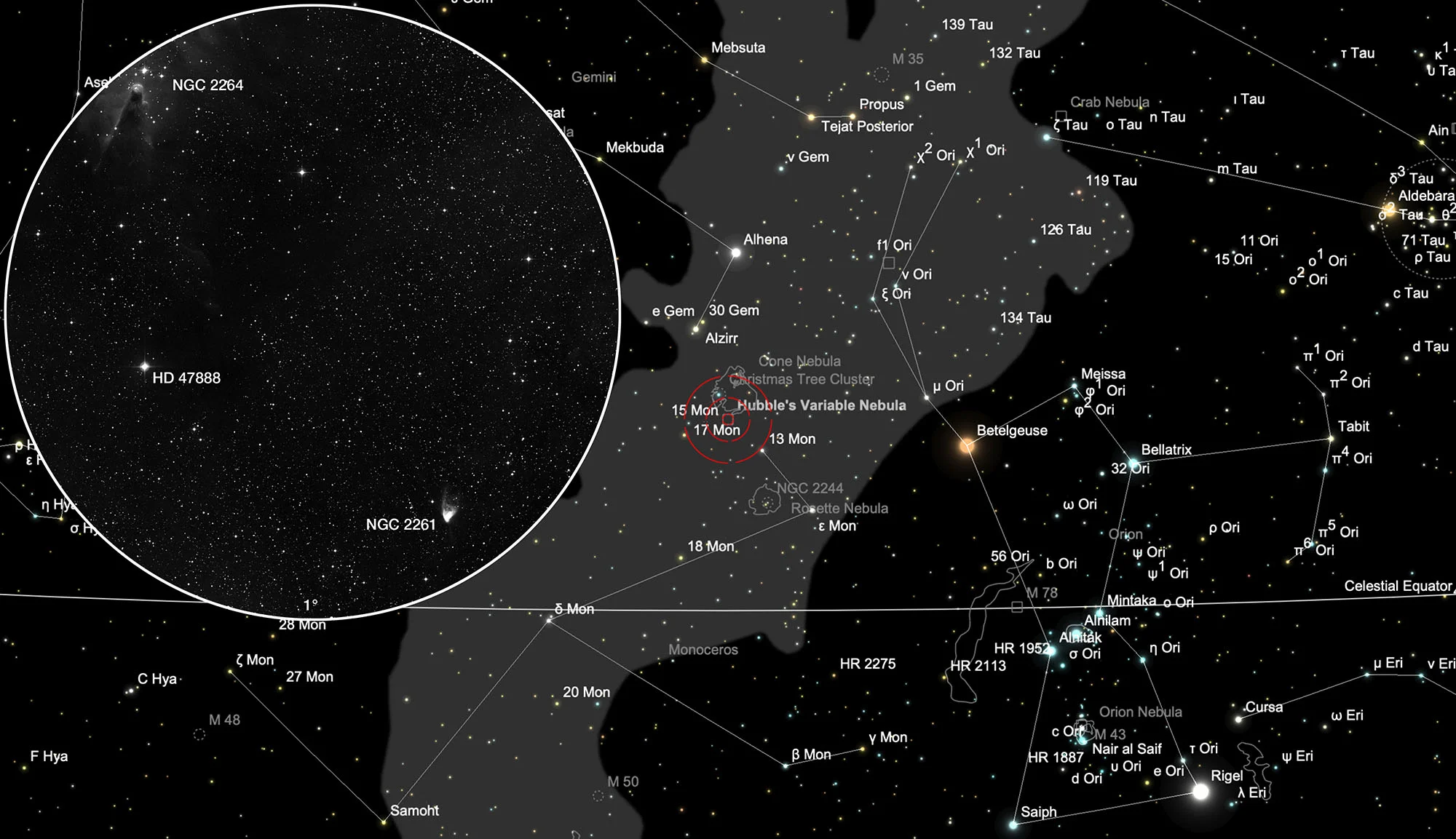Hubbles variable Nebula (NGC 2261)
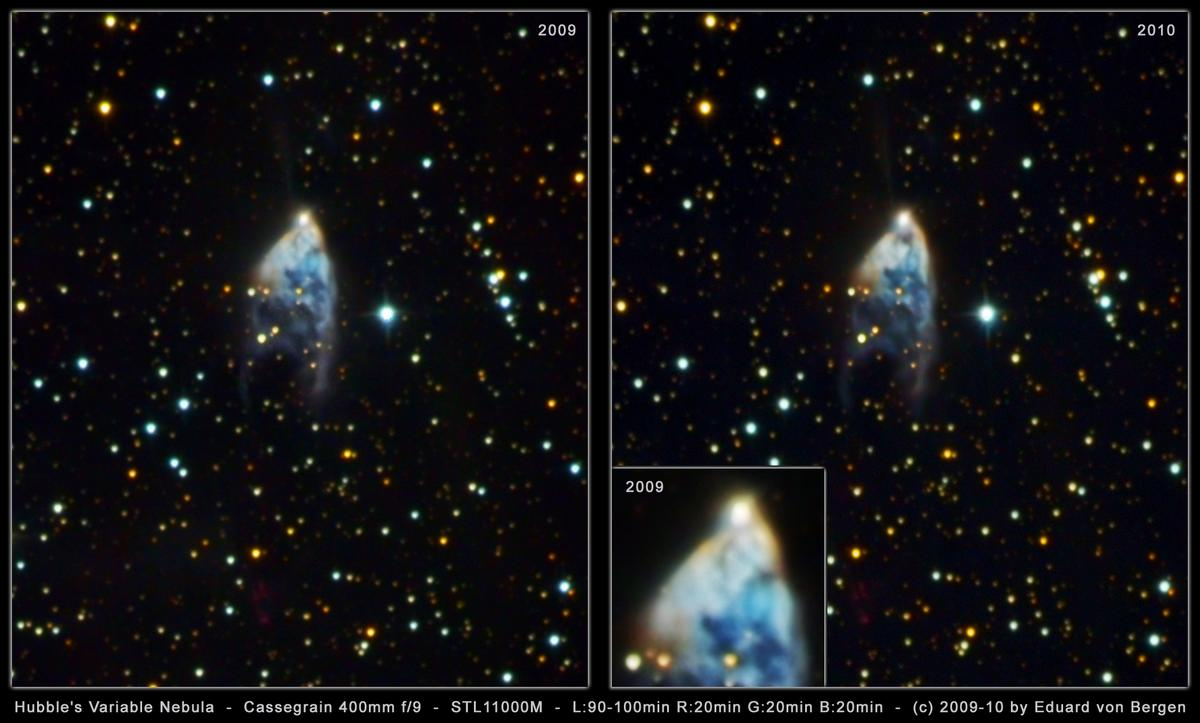
Object Description
Like many interesting deep-sky objects accessible to amateurs today, NGC 2261 was discovered by William Herschel. He observed it on 26 December 1783 and cataloged it as IV 2 and described it as «considerably bright, fan-shaped, about 2' long from the centre.» [463]
At the beginning of the 20th century, the eponymous discovery was made: the famous astronomer Edwin Hubble determined on the basis of photographs that the brightness and shape of the nebula change from time to time. Two different causes were found:
- Within the nebula is an irregularly variable star, R Monocerotis, whose brightness varies by up to four magnitudes.
- R Monocerotis is temporarily obscured by dust clouds, certain areas of the nebula then no longer receive starlight and are darkened. Changes can be made in larger telescopes for short periods of time such as months, weeks and become visible even days!
This nebula is also called the Santa Claus Nebula because of NGC 2261's peculiar shape, which resembles a long-bearded man wrapped in a long, thick winter coat. In addition, it is particularly easy to see in winter during the Christmas period.
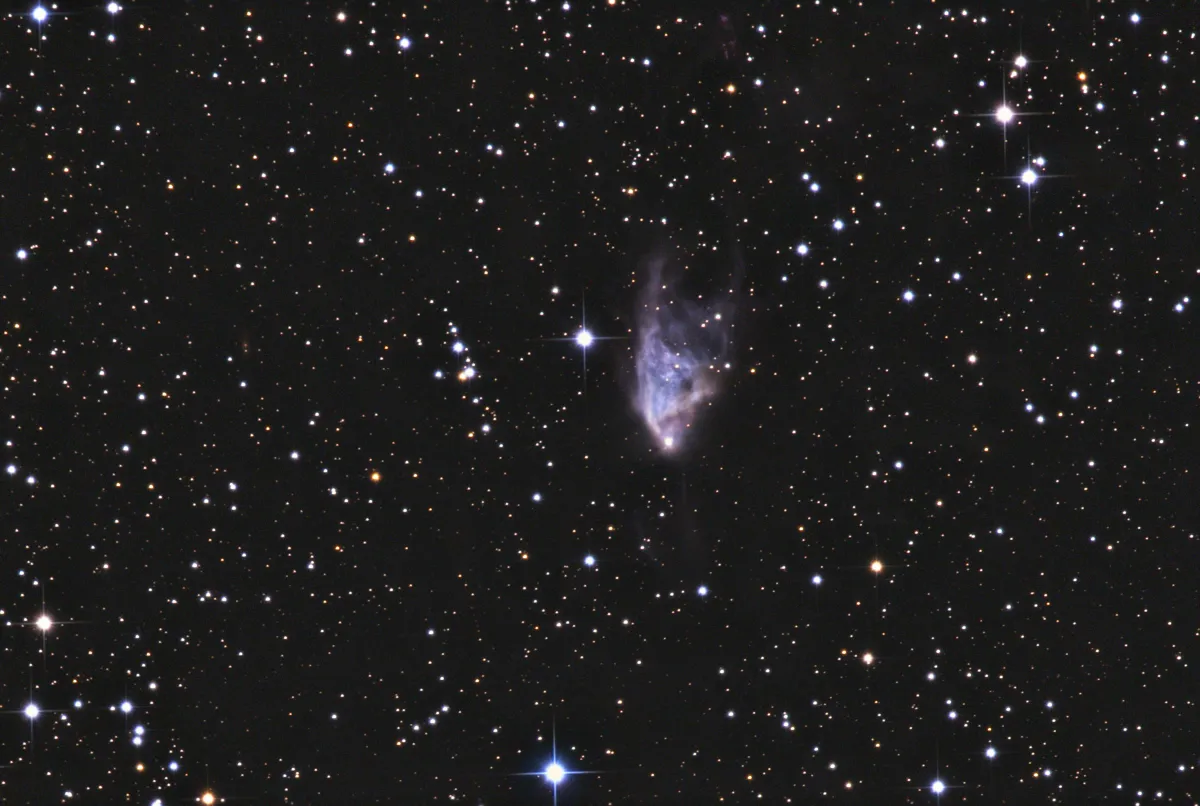
The star R Monocerotis is about 2500 light-years from Earth. It cannot be seen directly, but can be seen through the light reflected from dust clouds. The mass of the star is estimated at 10 solar masses and its age at only 300'000 years. A symmetrical counterpart to the fan-shaped nebula probably still exists on the southern side of the star, but this is obscured by intervening dust on our line of sight. [220]
| Designation | NGC 2261 |
| Type | EN+RN |
| Right Ascension (J2000.0) | 06h 39m 09.5s |
| Declination (J2000.0) | +08° 44' 40" |
| Diameter | 3 × 1 arcmin |
| Visual magnitude | 9.0 mag |
| Metric Distance | 0.800 kpc |
| Dreyer Description | B, vmE 330°, N com = * 11 |
| Identification, Remarks | WH IV 2; h 399; GC 1437; LBN 920; Hubble's variable nebula |
How to find Hubbles Variable Nebula?
Hubble's Variable Nebula lies in the constellation Monoceros about halfway between Alzirr (ξ Geminorum) and the Rosette Nebula (NGC 2237+), whose open star cluster can be seen with the naked eye on dark nights. The Christmas Tree Cluster (NGC 2264) of the 4.7 mag star 15 Monocerotis is about a degree away towards eleven o'clock and can also be seen with the naked eye. The 1° closeup shows the path from the Cone Nebula in NGC 2264 via the 7 mag binary star HD 47888 to the Hubble's Variable Nebula (NGC 2261). The best viewing time is September to June.
Visual Observation
200 mm Aperture: Observing NGC 2261 is highly dependent on atmospheric conditions! It is a relatively bright and small object, so the calmness of the air (seeing) is particularly important here, whether structure is recognizable or not. With bad to mediocre seeing I observe with magnifications between 100x and 150x, with mediocre to good conditions between 150x and 200x and with good to very good conditions I also go over 200x. (This applies to a reflecting telescope with an aperture of 20 cm and a focal length of 2 m.)
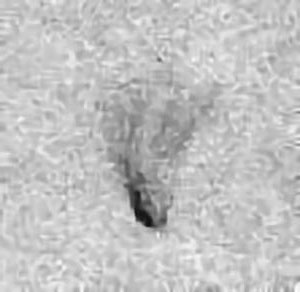
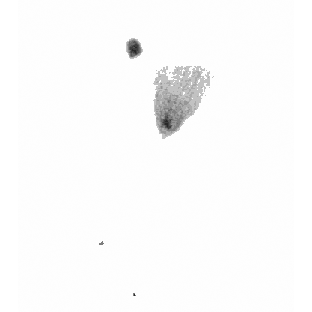
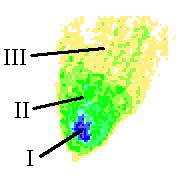
Looking at Hubble's Variable Nebula, I see three regions: (I) the star R Monocerotis at the apex of the nebula, (II) the bright southern region containing the star, and (III) the fainter region to the north. The border between areas II and III is irregular. With good contrast, this is clearly visible. Because of the variability of the nebula, it is worth making sketches at the telescope. Hubble's Variable Nebula is one of the few deep sky objects in which the amateur astronomer can detect visible changes within a short period of time - making it one of the most interesting and exciting objects! — 200 mm f/10 SCT, 1996, Philipp Reza Heck
400 mm Aperture: The sight of the fan-shaped nebula is pretty impressive. It appears bright and can stand up to higher magnifications. Structures within the nebula were not detected, only an outwards decreasing brightness. As reflection nebula can best be seen without any filter, I did not try it with an O-III filter. — Taurus T400 f/4.5 Dobsonian, Bernd Nies, Glaubenberg Langis, 28 February 2022
762 mm Aperture: Hubble's Variable Nebula appears as a not quite isosceles triangle with a bright star at its apex. The lower left corner of the nebula is brighter than the right. The brightness of the triangle decreases toward the baseline, fading even more to the right. Without filter the nebula is more visible than with UHC filter. — 30" SlipStream-Dobson f/3.3, Hasliberg, 14. 2. 2023, Eduard von Bergen
